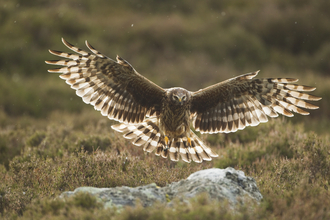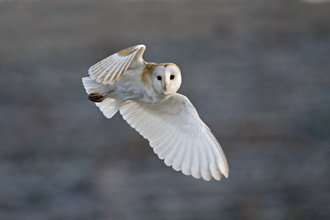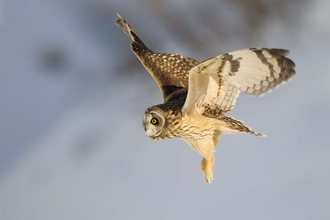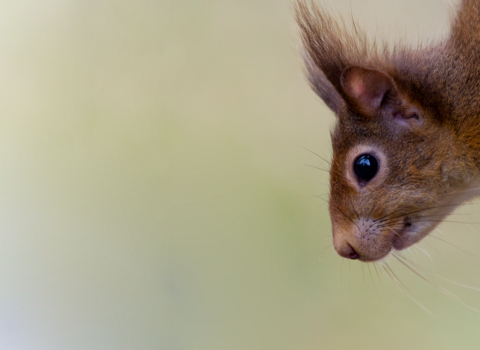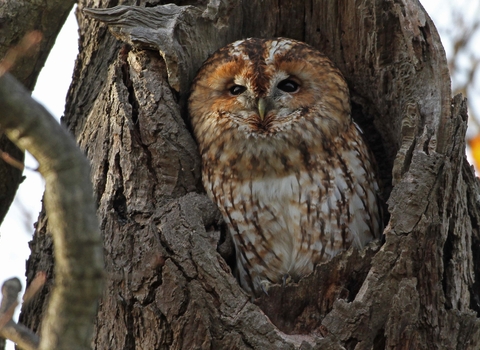
Tawny owl ©Margaret Holland
Tawny owl
Tawny owls are the familiar brown owls of Britain’s woodlands, parks and gardens. They are known for their ‘too-wit too-woo’ song that can be heard at night-time.
Scientific name
Strix alucoWhen to see
January to DecemberSpecies information
Category
Statistics
Length: 37-39cmWingspan: 99cm
Weight: 420-520g
Average lifespan: 4 years
Conservation status
Classified in the UK as Amber under the Birds of Conservation Concern 5: the Red List for Birds (2021).
Habitats
About
Tawny owls are our biggest common owl, familiar in Britain’s woodland, parks and gardens. The‘too-wit too-woo’ call often referred to as being the song of the generic owl, is that of the tawny owl. But it isn’t the call of a single bird, but instead made by a male and female calling to each other.The female makes a ‘too-wit’ sound and the male answers with ‘too-woo’! These incredible creatures sit on their favourite perch on the lookout for small animals like voles and mice to eat. They nest during springtime in hollow trees, or sometimes choose to reuse an old crow’s nest!How to identify
The tawny owl is mottled reddish-brown, with a paler underside. It has a big, round head, rounded wings, large, dark eyes, and a dark ring around its face.Distribution
Widespread, but absent from Northern Ireland and the Isle of Man.Did you know?
Like other owls, tawny owl can famously turn their head through 270 degrees and are able to look behind them. Although owls have binocular vision, their forward-facing eyes cannot move in their sockets, so they must turn their heads instead.Watch
Tawny Owl (https://vimeo.com/453690105)
Tawny Owl by Tom Hibbert
Listen
The tawny owl has a rich repertoire of calls. Listen out for the short 'ke-wik' contact call and the quavering 'hoo, hu-hooo' advertising call.

